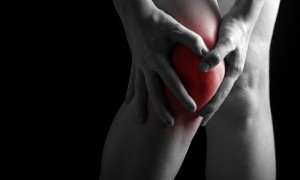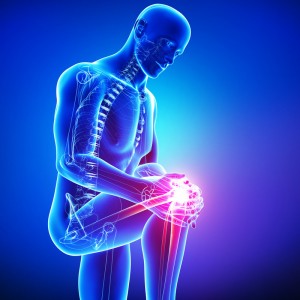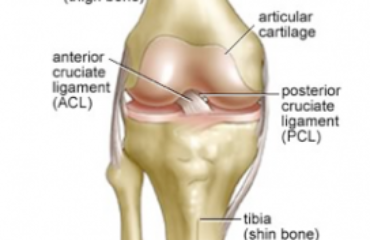The knee joint is comprised of three separate bones: the femur (thigh bone), the tibia (shin bone), and patella (kneecap). Articular cartilage covers the entire joint surface and offers a smooth gliding surface for motion. Proper knee function depends on intact ligaments. There are four main ligaments of the knee: the anterior cruciate ligament (ACL), the posterior cruciate ligament (PCL), the lateral collateral ligament (LCL), and the medial collateral ligament (MCL). The menisci are inside the joint, lying between the femur and tibia. Any one or more of these structures can be injured. Find out about the most common types of knee injuries.
Patella Tendinitis
Patella tendinitis occurs after overuse or repetitive trauma. This injury is often associated with basketball and volleyball. With this injury, patients present with pain in the front aspect of the knee, directly over the patella tendon. Treatment involves rest, use of ice for 20-minute intervals, stretching/strengthening exercises, and nonsteroidal  anti-inflammatory drugs (NSAIDs), such as naproxen or ibuprofen.
anti-inflammatory drugs (NSAIDs), such as naproxen or ibuprofen.
Bursitis
The bursae are synovial-lined cavities that lie over the knee. Overuse and chronic irritation can lead to local inflammation and fluid collection in the bursa. Bursitis is treated by stopping the irritating activity, a short course of NSAIDs, and use of ice packs. With major fluid accumulation in the bursae, an arthrocentesis (fluid aspiration) is required.
Chondromalacia
Pain in the front aspect of the knee is called chondromalacia. This can be caused by patella malalignment, osteoarthritis, bursitis, osteochondral fractures, synovial plica, and patella instability. The knee is usually treated with activity modification, ice packs, and NSAIDs. Once pain subsides, physical therapy is used for strengthening and stretching.
Meniscus Tear
The meniscus can be torn from a twisting injury. The medial meniscus is not very mobile, and it has a greater chance of being torn than the lateral meniscus. After a physical examination and x-rays, a magnetic resonance imaging test may be required to confirm the diagnosis. With severe tears, surgical arthroscopy is used to repair the damage.
Fractures
The patella is the most common knee bone broken. Another common fracture occurs at the area where the ends of the tibia and femur meet to form the joint. Many knee fractures are the result of high-energy trauma, such as a fall from height or car collision.
Dislocation
A dislocation occurs when one or more of the bones of the knee joint are out of place. The dislocation can be partial or complete. When the tibia and femur are forced out of alignment, the patella can slip out of position. Dislocations are often caused by an abnormality in the knee structure, and they result from high-energy trauma, such as a sports injury.
ACL Tears
The anterior cruciate ligament (ACL) is often injured playing soccer, football, and basketball. The tear occurs from rapid changes of direction or from landing from a jump incorrectly. This ligament is often torn along with articular cartilage, a meniscus, and/or other ligaments (combined structure injury). Severe tears require surgical repair.
PCL Tears
The posterior cruciate ligament (PCL) is often damaged from a direct blow to the front of the knee when the knee is in a bent position. PCL injuries are often related to sports contact. Partial tears will heal with conservative care, whereas complete tears often require surgery.
Collateral Ligament Injuries
Collateral ligament injuries are often caused by a force that pushes the knee to one side. An injury to the medial collateral ligament (MCL) is often caused by a blow to the outside of the knee joint, and the lateral collateral ligament (LCL) can be injured from a blow to the inside of the knee pushing the knee outwards.
Top knee specialist in Phoenix, Tempe and Scottsdale, Dr. Adam Farber, provides exceptional treatment for all types of knee injuries from overuse, sports injuries and auto accidents. Most insurance is accepted, call PSK today for treatment with the best knee specialist in Phoenix!


